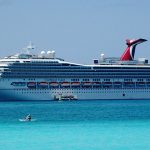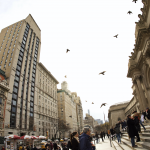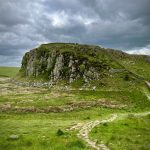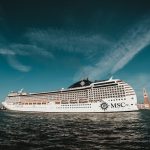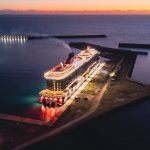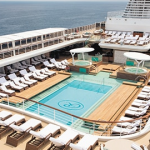
The quaint town of Harpers Ferry has a population of slightly over 200 residents. Despite its small size, the town boasts a rich history and stunning natural scenery that can easily captivate you during your stay.
The town is located at the confluence of two rivers, namely the Shenandoah and Potomac rivers. Both rivers serve as state borders, which means crossing them would get you straight into either Maryland or Virginia.
About Harpers Ferry
Harpers Ferry is a 19th-century town first settled in 1732 by Peter Stephens. His “squatter’s rights” were later bought by Robert Harper, whom the town is named after. It was Harper who built the ferry across the Potomac River in 1750, making the town a launching pad for settlers moving into the Shenandoah Valley and further west. The ferry remains part of the Harpers Ferry National Historical Park to this day.
The quaint town is known for playing a significant role in the American Civil War after radical abolitionist John Brown attacked the U.S. Armory and Arsenal at Harpers Ferry. The architecture of the houses and shops reflects both the town’s founding and its tumultuous history.
After the end of the Civil War, Reverend Nathan Cook Brackett founded historically black Storer College on Camp Hill. The college officially closed its doors in June 1995 but remains part of the national park.
Today, most of the town is part of the National Park Service. Areas of the town not contained under the Park service are within the federally-recognized Harpers Ferry Historic District.
Getting To Harpers Ferry
There are two ways to get to Harpers Ferry: by car or by train.
If you’re arriving by car, you want to go to US Route 340 in West Virginia where the park’s visitor center is located. Here are directions from communities nearby.
- Charles Town – follow US Route 340 N to Harpers Ferry. Turn right at the Harpers Ferry stoplight.
- Shepherdstown – take Route 230 S to the intersection of Route 230 and Route 340. Turn left at the stoplight onto Route 340 N and then follow Route 340 until the Harpers Ferry stoplight. Turn right.
- Frederick – follow US Route 340 S from Frederick to Harpers Ferry. Turn left at the Harpers Ferry stoplight.
- Martinsburg – take Route 9 E to Charles Town and take the exit for Harpers Ferry. Turn left onto Route 340 N and follow to the Harpers Ferry stoplight. Turn right at the stoplight.

The main parking lot at Harpers Ferry National Historic Park is located at 171 Shoreline Drive. It is also the location of the Harpers Ferry Visitor Center and starting point for the shuttle bus to Lower Town. The parking fee cost $15 for motorcycles and $20 for vehicles.
Other parking lots include:
- River Access Parking lot at the junction of Highway 340 and Shenandoah Street
- Harpers Ferry Station Parking Lot off of Potomac Street in Lower Town
- Bolivar Heights Parking Area off Whitman Avenue
- Lower Bolivar Heights Parking Area off of Bakerton Road, with access to the Lower Loop on Bolivar Heights
- Murphy-Chambers Farm Parking Area off Murphy Road
- Schoolhouse Ridge North Parking Area at 874 Bakerton Road
- Schoolhouse Ridge South Parking Area at 2083 Millville Road
Note: If you are planning on parking overnight, make sure to inquire about a vehicle permit at the visitor center. Applications are subject to approval.
If you are arriving by train, here are the directions.
- MARC Commuter Rail – Trains operate Monday through Friday between Union Station in Washington and Martinsburg in West Virginian on the March Brunswick Line
- Amtrak – Trains for the “Capitol Limited” line run from Washington and stop in Harpers Ferry, West Virginia all week. However, reservations are required.
Getting Around Harpers Ferry
Once you get to Harpers Ferry National Historical Park (Harpers Ferry NHP), there are several areas to discover.
Visitor’s Center
From 171 Shoreline Drive, visitors can take a shuttle bus to the Lower Town. Bus tickets are included in the entrance fee. The shuttle bus operates daily, as long as the park is open. Shuttle buses run every 10 to 15 minutes.
Visitors can also walk to the Murphy-Chambers Farm trails or the Lower Town trail.
Lower Town
Park shuttle buses travel from the Visitor Center to the Lower Town. The town features four street blocks lined with historical museums and exhibits.
The Lower Town has access to several walking and hiking trails, including the Appalachian Trail, Loudoun Heights trail, Chesapeake & Ohio Canal National Historical Park town path, Maryland Heights trail, and the Virginius Island and Hall’s Island trails.
What To Do In Harpers Ferry
There is plenty of things to do in Harpers Ferry, especially with the town serving as a home to historic sites, monuments, landmarks, and buildings that honor the town’s historical events.
Here is our list of the best things to do in Harpers Ferry for your next visit.
Harpers Ferry National Historical Park, Harpers Ferry, West Virginia
While accessible from West Virginia, the park does not just encompass the state. It covers the entire confluence of the Potomac and Shenandoah Rivers. The land in the park’s domain also extends into West Virginia, Virginia, and Maryland.
The park’s highlight is the Lower Town area where the buildings and landmarks that helped shaped the town and the historic community is located. Some of the buildings to visit include:
- John Brown’s Fort
- John Brown Wax Museum
- Industry Museum
- Civil War Museum
- Jefferson Rock
- Lockwood House
John Brown’s Fort

John Brown, an abolitionist, was one of the many figures who played a significant role in Harpers Ferry. In fact, the building (pictured above) is named after him after he raided it for weapons. The building served as the Harpers Ferry Armory prior to the raid.
In 1859, John Brown’s raid happened as part of his attempt to initiate a slave revolt. This was a pivotal moment in Civil War history.
Jefferson Rock
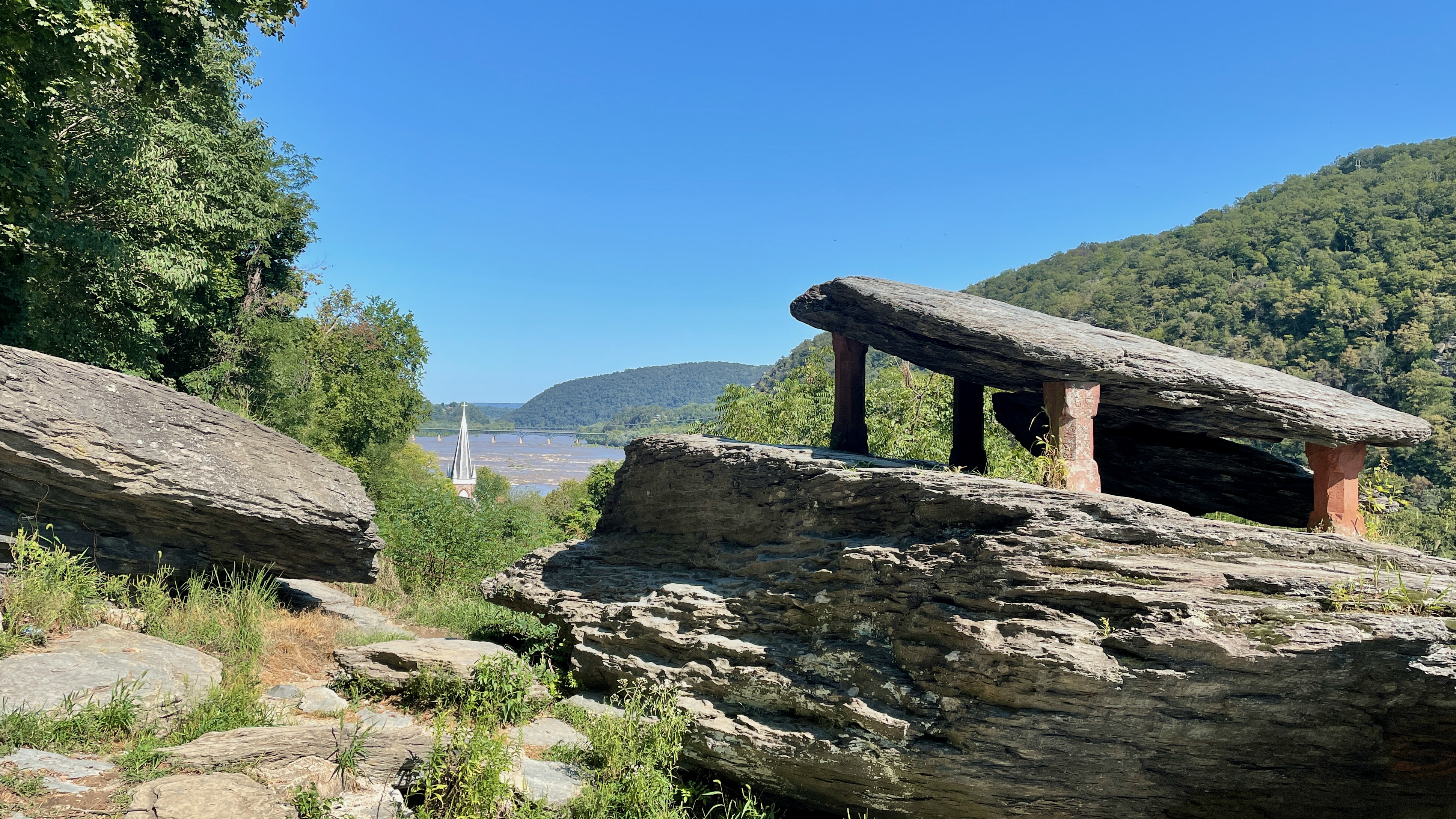
Located between Lower Town and Camp Hill, Jefferson Rock offers spectacular views of the surrounding mountains and rivers. The rock formation is named after Founding Father Thomas Jefferson who was enthralled by the view of the river passing through the Blue Ridge Mountains during his visit in 1783.
The Jefferson Rock walking trail is relatively easy. However, it is not accessible for people with wheelchairs or disabilities.
Jefferson Rock is part of the Appalachian Trail.
St. Peter’s Roman Catholic Church
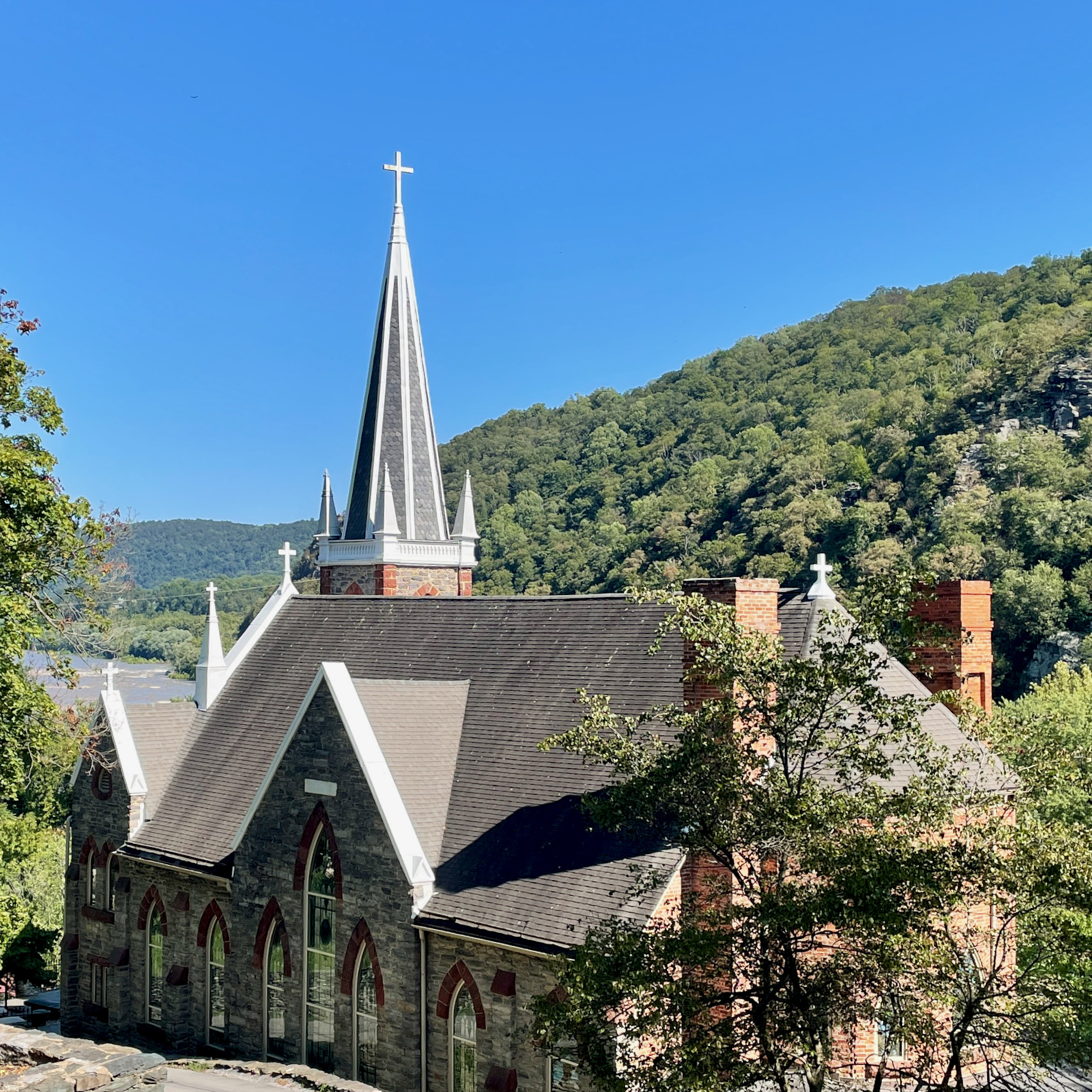
Built in 1833, St. Peter’s Roman Catholic Church is considered one of the most beautiful churches in the region. This is primarily due to the church’s location, which is on a hilltop high above the town.
The church boasts sweeping views inside and out. Standing outside its walls, you’ll be treated to sweeping views of the Shenandoah and Potomac Rivers. Inside, visitors are treated to incredible architecture that has been changed many times throughout its history.
The gothic-style church continues to operate to this day and hosts a mass at 9:30 a.m. local time every Sunday. The church is closed on weekdays.
Heyward Shepherd Monument

Heyward Shepherd was a free black man. He was also the first person to be killed in John Brown’s abolitionist raid. The monument was erected in his honor in 1931, but it was not without controversy.
Several groups said they did not want the monument to illustrate that black people were rebellious or anti-slavery. There was, however, nothing that suggested that Shepherd was either a slave or a person opposed to John Brown’s raid.
In contrast, the United Daughters of the Confederacy presented Shepherd as a “happy slave.”
Either way, the monument now stands as a testament to the opposing stories during the Civil War era.
John Brown Wax Museum
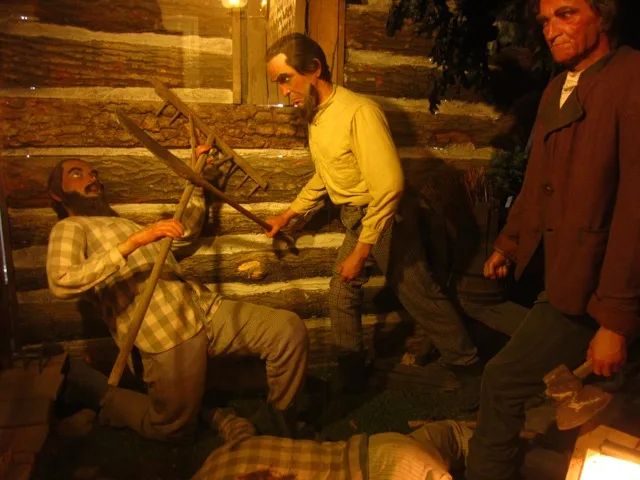
The John Brown Wax Museum is unlike other wax figure museums in that it depicts John Brown’s hatred of slavery in detail. The wax figures inside the museum depict a number of scenes on Brown’s raid of the town as well as the history of his other violent exploits.
Whitewater Rafting

Harpers Ferry is located near the Shenandoah and Potomac Rivers, making it the perfect spot to try out whitewater rafting, which involves using an inflatable raft to navigate fast, shallow rivers.
There are a number of whitewater companies offering river rafting options, including guided or self-guided tours (depending on your experience level).
All whitewater rafting companies in Harpers Ferry offer both solo and group rafting.
Harpers Ferry Toy Train Museum & Joy Line Railroad
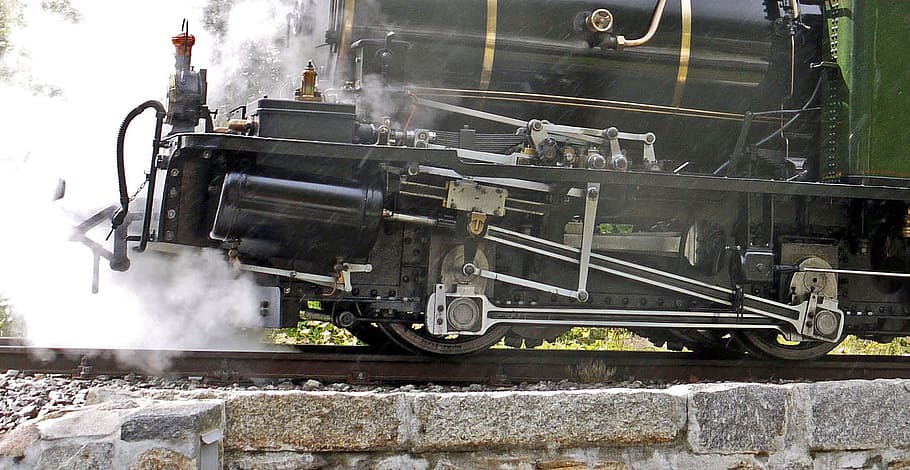
The Harpers Ferry Toy Train Museum offers fun for visitors of all ages. The museum is chock full of antique electric train collections and a range of toys dating back to before 1938. In addition to the toys found in the museum, visitors can also partake in an outdoor train ride on the Joy Line Railroad.
True Treats Historic Candy

True Treats Historic Candy is the only research-based historic candy shop in the U.S. The shop sells a wide range of sweets popular in a certain period in history from the 1500s to the present times. They also have sweets that were cited in the Bible and vegan treats seen in the Chronicles of Narnia.

